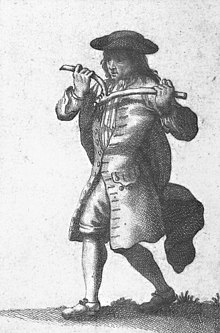Redaktor:Jakub Mak/Dowsing

Prútikárstvo je pseudovedecká metóda, ktorá sa pokúša nájsť podzemnú vodu, kovy alebo rudy, drahokamy, ropu, hroby, alebo iné predmety a materiály bez použitia vedeckých prístrojov. Neexistujú vedecké dôkazy o tom, že tento spôsob je účinnejší než náhodný výber miesta. [1] Prútikári sú mnohokrát uspešní vďaka tomu, že v skúmanej lokalite je vysoká šanca natrafiť na podzemnú vodu. [2]
Pohyb virgule sa vo všeobecnosti pripisuje ideomotorickej reakcii [3] [4] [5], pri ktorej subjekt vykonáva pohyby nevedome. Šablóna:Div col
- Barrett, Linda K. and Evon Z. Vogt, "The Urban American Dowser", The Journal of American Folklore 325 (1969), S. 195–213.
- Barrett, William and Theodore Besterman. (1926). The Divining Rod: An Experimental and Psychological Investigation. Kessinger Publishing Reprint Edition, 2004.
- Bird, Christopher. (1979). The Divining Hand. New York: Dutton.
- Culpin, Millais. (1920). Chapter Water-Divining. In Spiritualism and the New Psychology: An Explanation of Spiritualist Phenomena and Beliefs in Terms of Modern Knowledge. Edward Arnold, London.
- Ellis, Arthur Jackson. (1917). The Divining Rod: A History of Water Witching. Washington: Government Printing Office.
- [s.l.] : [s.n.]. Dostupné online. ISBN 1-908878-10-X.
- Gregory, John Walter. (1928). Water Divining. Annual Report of the Smithsonian Institution. United States Government Printing Office.
- Randi, James. (1982). Flim-Flam!. Prometheus Books. Devotes 19 pages to double-blind tests in Italy which yielded results no better than chance.
- Shenefelt, Philip D., "Ideomotor Signaling: From Divining Spiritual Messages to Discerning Subconscious Answers during Hypnosis and Hypnoanalysis, a Historical Perspective", American Journal of Clinical Hypnosis, Vol.53, No.3, (January 2011), pp. 157–167.
- Spiesberger, Karl, Reveal the Power of the Pendulum.
- Spitz, H.H. & Marcuard, Y., "Chevreul's Report on the Mysterious Oscillations of the Hand-Held Pendulum: A French Chemist's 1833 Open Letter to Ampère", The Skeptical Inquirer, (July/August 2001) Vol.25, No.4, pp. 35–39.
- Underwood, Guy, The Pattern of the Past, Museum Press 1969; Sir Isaac Pitman & Sons Ltd 1970; Abacus 1972.
- Parameter "periodikum" je povinný!. Dostupné online. DOI: 10.1016/j.shpsc.2004.12.008.
Šablóna:Div col end [[Kategória:Pseudoveda]]
- ↑ [s.l.] : [s.n.]. ISBN 978-0-226-86297-2. via [s.l.] : [s.n.]. ISBN 978-1-57392-979-0.
- ↑ . Dostupné online.
- ↑ Zusne, Leonard; Jones, Warren H. (1989). Anomalistic Psychology: A Study of Magical Thinking. Lawrence Erlbaum Associates, Inc. pp. 105–110. ISBN 978-0-805-80507-9
- ↑ Novella, Steve; Deangelis, Perry. (2002). Dowsing. In Michael Shermer. The Skeptic Encyclopedia of Pseudoscience. ABC-CLIO. pp. 93–94. ISBN 1-57607-654-7 "Despite widespread belief, careful investigation has demonstrated that the technique of dowsing simply does not work. No researcher has been able to prove under controlled conditions that dowsing has any genuine divining power... A more likely explanation for the movement of a dowser's focus is the ideomotor effect, which entails involuntary and unconscious motor behavior."
- ↑ Lawson, T. J; Crane, L. L. (2014). Dowsing Rods Designed to Sharpen Critical Thinking and Understanding of Ideomotor Action. Teaching of Psychology 41 (1): 52-56.